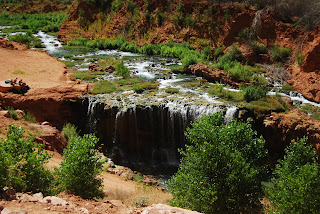La zona del suroeste de EUA es muy interesante geograficamente. La misma, mas de un millon de anios atras estuvo sumergida bajo agua, que luego se convirtio en hielo. Estas capas de hielo, segun hicieron su retirada al final de la ultima Era Glaciar, cicatrizaron la topografia y el paisaje. Los inmensos llanos y las montanas que vemos hoy dia, son el residuo de toda esa actividad geologica. No solo las cicatrices visibles de esta area son las del terreno.
Los nativos del area como por ejemplo los Coahuiltecos, Comanches, Apaches, Tiguas, entre otras, tambien llevan sus cicatrices y las podemos percibir. Estas naciones fueron sistematicamente aplastadas por dos procesos coloniales casi consecutivos, primero con Espana y luego con EUA. Conocieron mejor que nadie la hipocresia de la politica estadounidence con los cientos de "tratados" que nunca se cumplieron y atestiguando todo esto siempre estuvo el silencioso desierto.
Hoy dia continuamos viendo las cicatrices de esta alucinante zona. En el presente no solo son los gobiernos y los nativos, tambien lo son los migrantes, los que han muerto en el camino, los trabajadores explotados, las familias divididas, las mujeres y nin@s maltratados o abusados, los narcos, los federales y todo el amalgama que hace de esta zona una de las mas violentas del mundo.
Si todo este tiempo el desierto ha sido testigo mudo de este caos,
la Gente ya no mas!!!
Reynaldo Padilla Teruel

















































